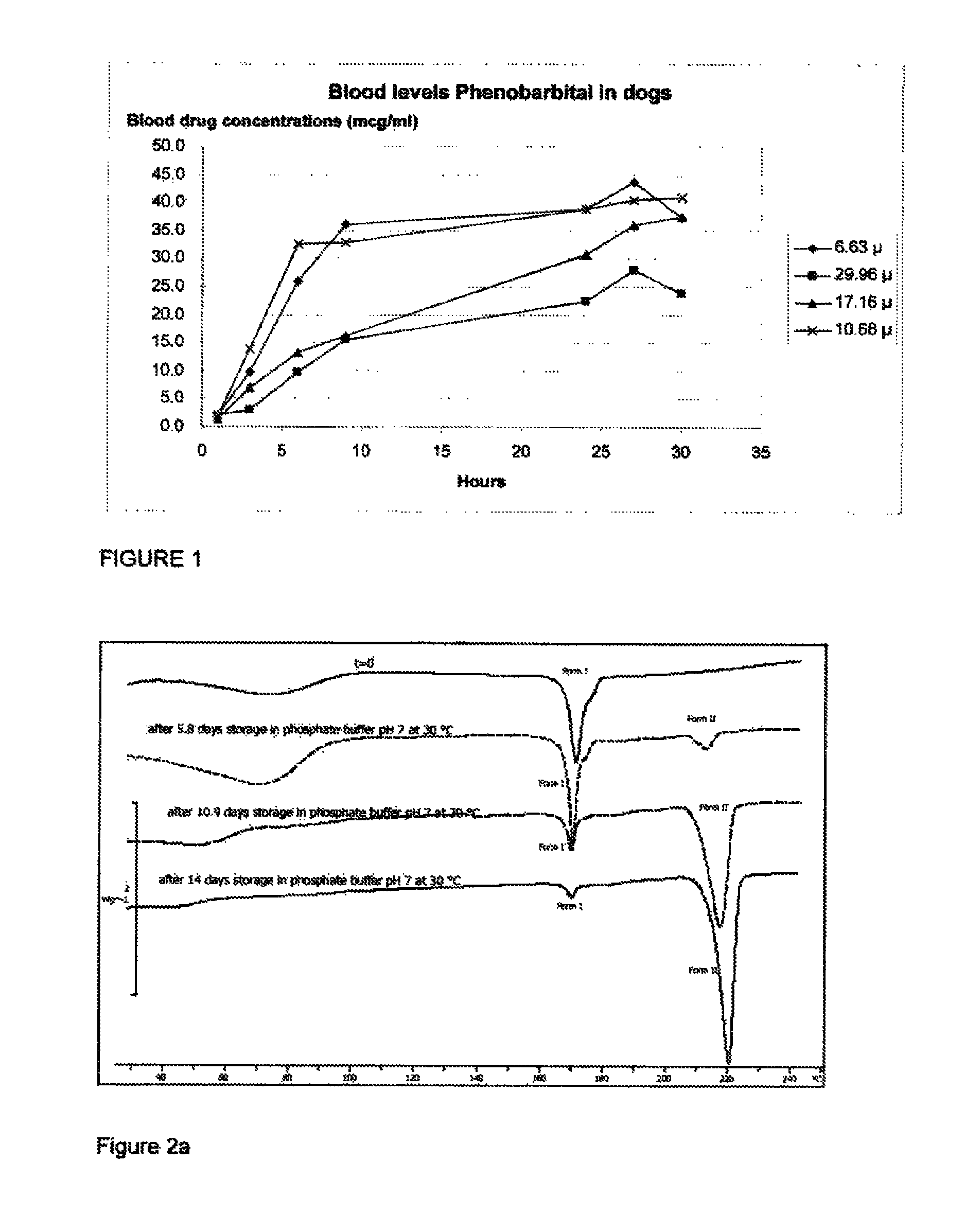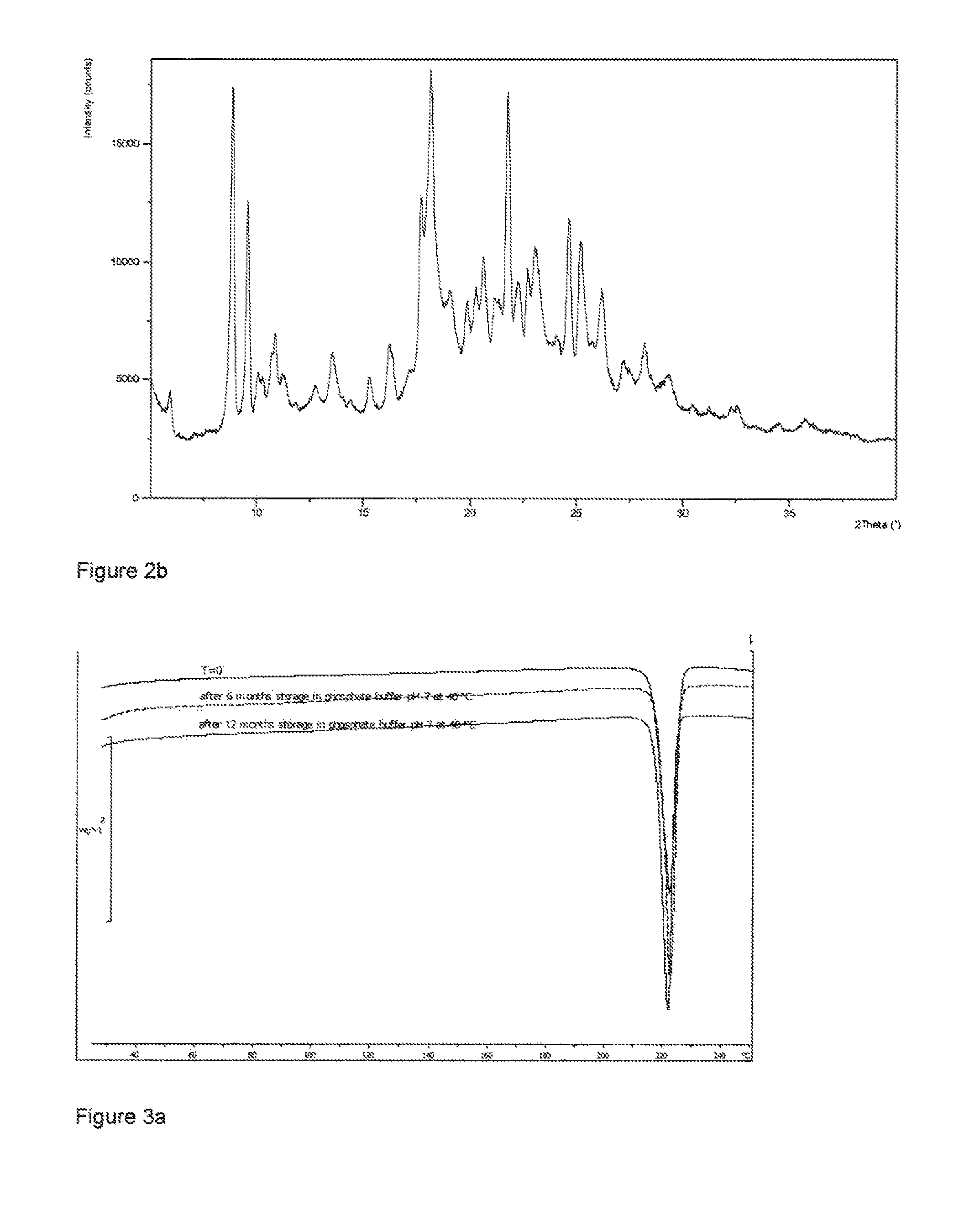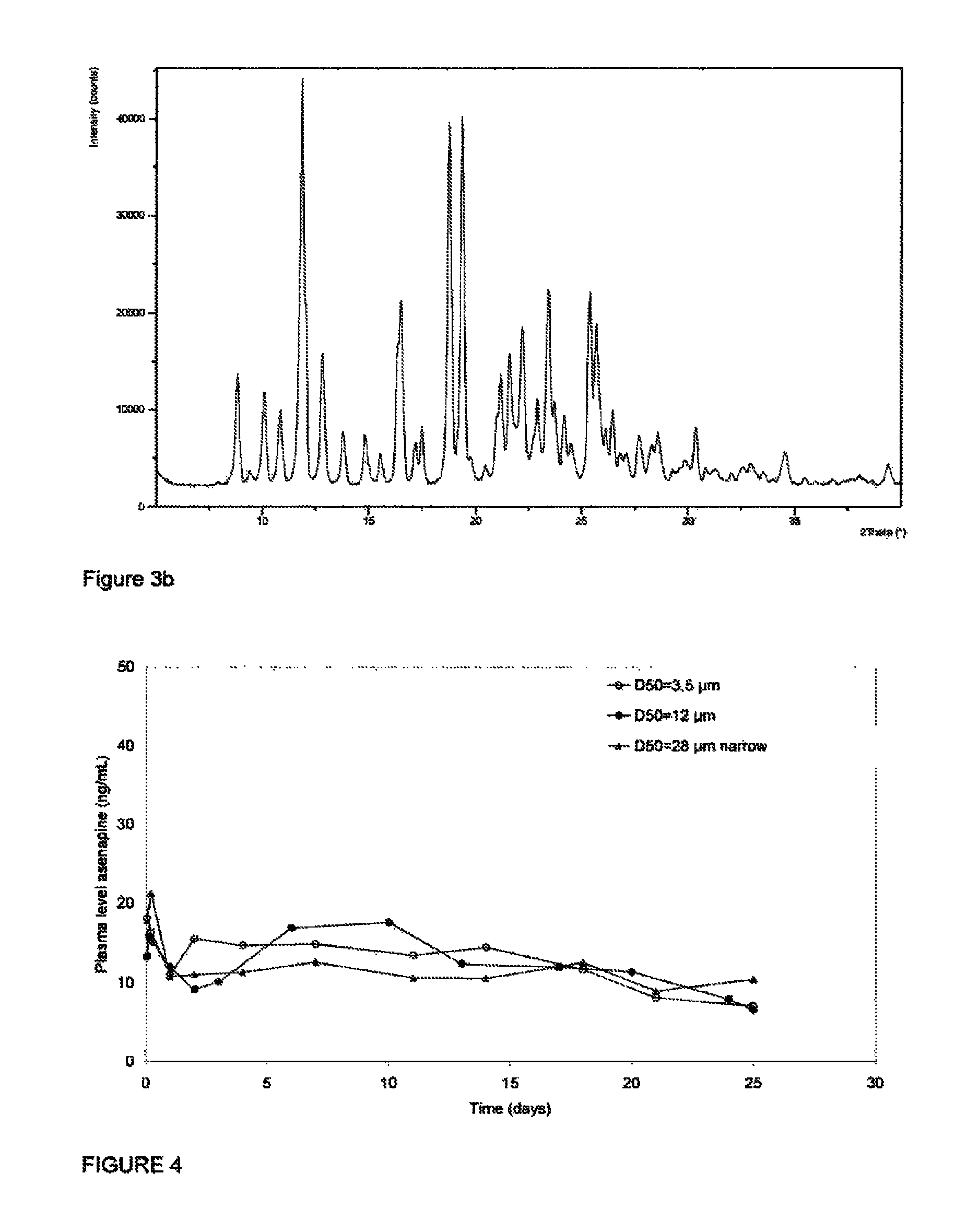Injectable formulations containing asenapine and method of treatment using same
a technology of injection formulation and asenapine, which is applied in the direction of biocide, heterocyclic compound active ingredients, drug compositions, etc., can solve the problems of adversely affecting the effectiveness of the formulation, lack of dosing compliance, and risks associated with the use of this formulation
- Summary
- Abstract
- Description
- Claims
- Application Information
AI Technical Summary
Problems solved by technology
Method used
Image
Examples
example 1
Preparation of Asenapine Hemipamoate and Asenapine Hemipamoate Crystalline Form II Therefrom
[0070]Asenapine maleate for use in preparing crystalline Form lI of asenapine hemipamoate was prepared in accordance with the procedures described in published international application No WO2008 / 003460 (see Examples 1 and 6 therein).
[0071]Seeds of crystalline Form II of asenapine hemipamoate were prepared by titrating aliquots of an ethanol solution of asenapine maleate into an ethanol solution of disodium pamoate and crystallizing crystalline Form II of asenapine hemipamoate therefrom. Accordingly, 201 gram of asenapine maleate prepared as described in published international application publication no. WO08 / 003460 was dissolved in 3.0 L of USP grade ethanol at 75° C. Disodium pamoate (108.7 g, USP grade used as received; was dissolved in 13.5 L of ethanol (USP grade) at 75° C. Aliquots of the asenapine maleate solution were added to the solution of disodium pamoate while maintaining the mi...
example 2
Preparation of Injectable Composition Comprising Crystalline Form II of Asenapine Hemipamoate
[0074]A phosphate buffer was prepared by placing into a vessel equipped with a mechanical stirring apparatus 1000 g of sterile water, 30 g of macrogol 3400, 1.18 g of disodium hydrogen phosphate, 0.47 g of sodium dihydrogen phosphate, and 7.6 g of sodium chloride. The vessel was stirred for one hour at ambient temperature (about 20° C.), until dissolution was complete. After all of the contents had dissolved, the pH of the buffer was adjusted by adding aliquots of 1M aqueous phosphoric acid and 1M aqueous sodium hydroxide as needed (with aliquots of the buffer being withdrawn and tested using a standard laboratory pH meter after the addition of each aliquot) until the buffer attained a pH of 7.0.
[0075]Aliquots of crystalline Form II of asenapine hemipamoate, prepared in Example 1, above, were micronized and classified into fractions having various d50 values as determined by laser diffractom...
example 3
In Vivo Studies of Depot Administration of Asenapine Hemipamoate Composition Using Rabbits
[0080]Each of the formulations prepared in Example 2 were administered to a series of experimental animal subjects (New Zealand white rabbits) as a depot injection. A depot of 1 mL volume of the formulation selected was administered into the left limb of the subject. At time intervals following injection, blood samples were collected from the subject's ear artery in 0.03 mL of 0.2M EDTA, Samples were collected at 1, 3, and 6 hours post injection, then 1, 2, 3, and 6 days post injection, then on days 10, 13, 17, 20, 24 and 25. Once collected, blood samples were centrifuged for 2 min. at room temperature (125,000 N / kg). Plasma samples thus obtained were analyzed by LC / MS after adding an internal standard. The asenapine and internal standard were isolated from the sample by solid phase extraction. The extracted components were separated by liquid chromatography in accordance with published methodo...
PUM
| Property | Measurement | Unit |
|---|---|---|
| concentration | aaaaa | aaaaa |
| concentration | aaaaa | aaaaa |
| concentration | aaaaa | aaaaa |
Abstract
Description
Claims
Application Information
 Login to View More
Login to View More - R&D
- Intellectual Property
- Life Sciences
- Materials
- Tech Scout
- Unparalleled Data Quality
- Higher Quality Content
- 60% Fewer Hallucinations
Browse by: Latest US Patents, China's latest patents, Technical Efficacy Thesaurus, Application Domain, Technology Topic, Popular Technical Reports.
© 2025 PatSnap. All rights reserved.Legal|Privacy policy|Modern Slavery Act Transparency Statement|Sitemap|About US| Contact US: help@patsnap.com



